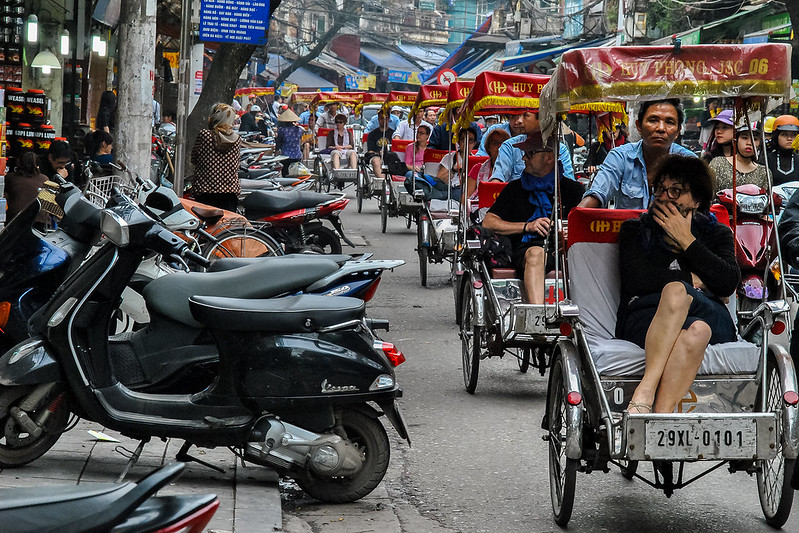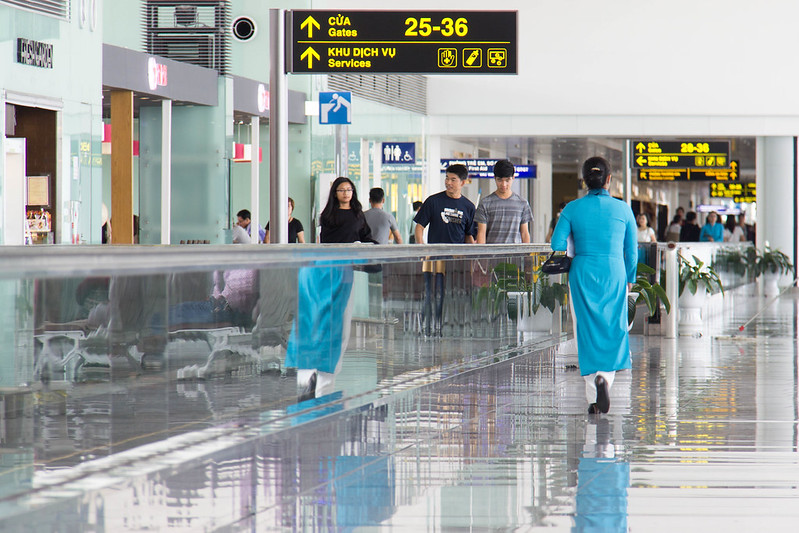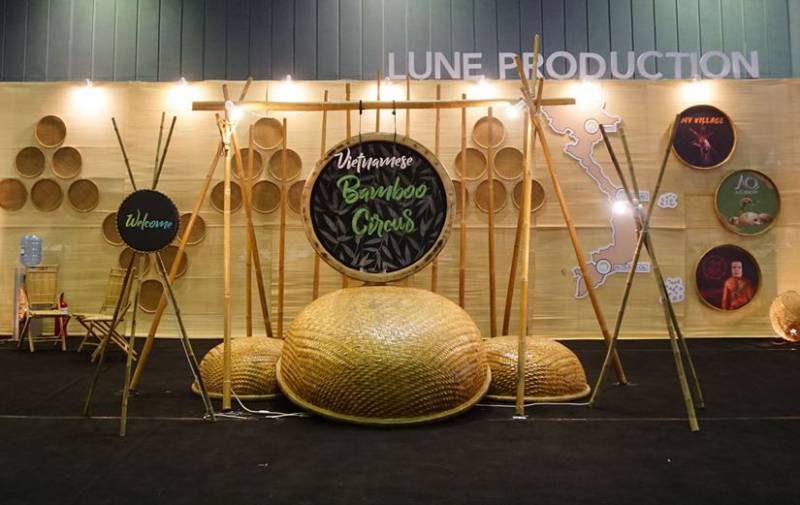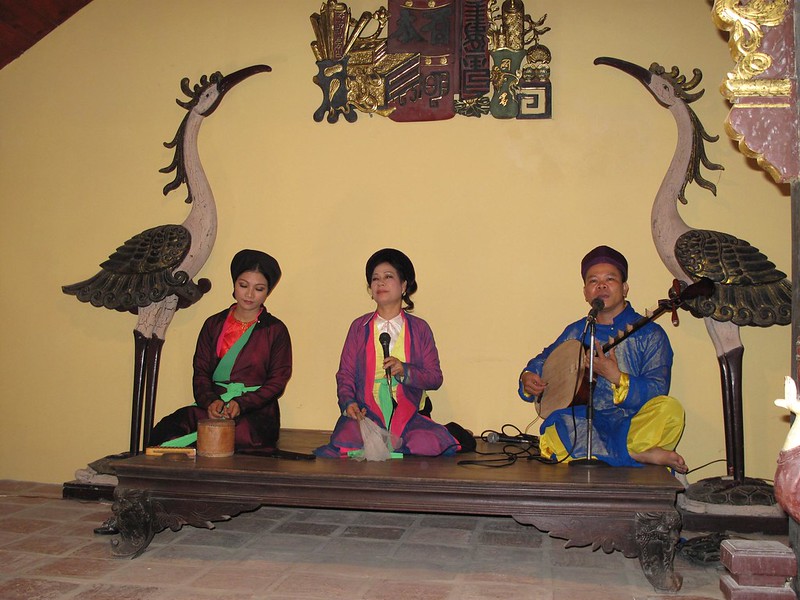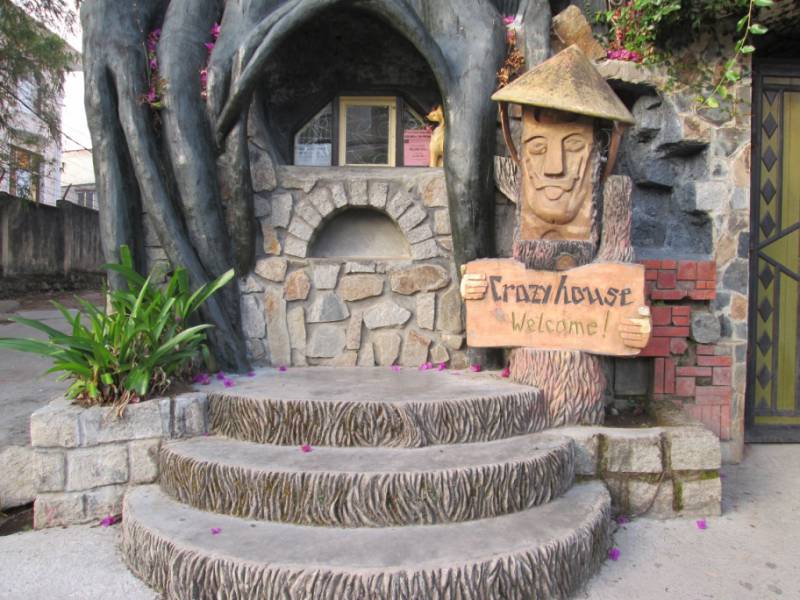Visa on arrival/Pre-arranged visa
More a pre-arranged visa than a real visa on arrival, these visas are arranged through a travel agent in Vietnam who obtains a "Letter of Approval" from the Vietnamese immigration department. This letter is copied to you and to the international airport you're planning on using and when you arrive at the airport your visa should be ready to go.
There's a wide range of prices and length visas available (up to six month, multiple-entry) and a near endless number of Vietnamese travel agents who'll happily arrange the visa for you -- Google something like "Vietnam visa on arrival" to find about four squillion agents to choose from.
Extensions
Extending a visa once in Vietnam is straightforward and a standard tourist visa can be extended three times (generally for a month at a time, though longer extensions of 90 and 180 days are also possible) before you need to leave and get a new one. The price varies depending on how many time you have extended it, but bank on somewhere between US$20 and $40, and the process takes around 3 days.
Validity issues
The main thing to watch for are visas that start running out from the day they are issued. Although this situation is increasingly rare, it does still occur, so be sure to check beforehand.
Visa application forms often request an entry point and entry date. In our experience, these have been flexible, but we've heard anecdotal stories of people saying they'll be entering on one day, showing up a few days early and being turned away -- this has not been our personal experience though.
Things to watch out for
Make sure that you are stamped into Vietnam for the amount of time you're allowed. Vietnamese visas are full page stickers, so make sure you have enough space in your passport.
Border crossings
For information on the border crossings and to read traveller's reports, please see our Vietnam border crossing page, or the exhaustive Border Crossings FAQ thread on the messageboard, which includes reports back from travellers.
Types of border crossings
Vietnam has two types of border crossings -- international and local. As you may suspect, international crossings are generally open to all foreign nationalities who are in possession of a valid passport and visa, while local crossings are open only to locals (on each side of the border) who are able to cross back and forth using some form of border pass. The international crossings are the only ones covered in this section.
Vietnam has over a dozen international overland border crossings. These allow overland travel to Cambodia (via five crossings), Laos (via six crossing) and China (at least two crossings). You can also arrive by air at Hanoi, Saigon and Da Nang international airports.
Popular crossings
The most popular overland border crossing to Cambodia is the Bavet / Moc Bai crossing . To Laos the Nam Phao / Cau Treo crossing is the most popular. While travel to China passes through both the Dong Dang / Ping Xian and Lao Cai / Hekou crossings -- depending on where in China you're headed.
Technicalities
On weekends and late hours, don't be surprised if you're asked to pay a dollar or so in "overtime" -- don't expect a receipt! Be sure that you're stamped into Vietnam for the correct length of stay.
Vietnam/Cambodia borders
Bavet / Moc Bai
This was the first crossing between Vietnam and Cambodia to open to foreign travellers and it remains easily the most popular. Daily buses regularly ply the Saigon - Phnom Penh route and the service is both fast and affordable. Cambodian visa on arrival is available here, Vietnamese visas must be arranged in advance.
Kaam Samnor / Ving Xuong
This very popular riverine crossing links Phnom Penh in Cambodia with the Vietnamese town of Chau Doc. Both slow and fast boat services are available. When you arrive at the border, a fixer will generally gather up all the passports and head into the immigration office to do all the paperwork -- you're welcome to accompany them, but it's not essential.
Phnom Den / Tinh Bien
Midway between Ha Tien and Chau Doc, this crossing is open to foreign travellers and Cambodian visa on arrival are available. The closest town on the Khmer side is Kampot or Takeo -- but both are a couple of hours away. There are buses from Ha Tien to the border, though a motorbike ride is far faster. On the Cambodian side, transport is a bit sparse and travellers have reported paying upto $55 for a taxi from the border town of Phnom Den to Kampot.
Prek Chak / Xa Xia
Yes, the Cambodia/Vietnam coastal border crossing is open and travellers with a valid Vietnamese visa can enter Vietnam at the Prek Chak / Xa Xia crossing a twenty minute motorbike ride from Kep. A moto to the border from Kep costs around US$7 and onwards transport to Ha Tien in Cambodia is available. Cambodian visa on arrival are available.
Le Thanh / O Yadao crossing
This remote crossing links Ban Lung in northeast Cambodia to Pleiku in Vietnam, with a through trip between the two taking about six hours. From the Vietnamese side, buses run from Pleiku to Duc Co, from where you'll need to grab a xe-om for the last 20km to the border. From the border to Ban Lung is a trip of about 70km -- expect to pay US$15-20 to charter a car for the run, $10-15 by moto.
Vietnam / Laos borders
Sop Hun / Tay Trang
This border has finally opened to international travellers. To get into Vietnam, a bus leaves three times a week from Muang Khua on the Lao side for Dien Bien Phu on the Vietnamese side. The bus leaves at 07:00, and costs 50,000 kip (plus 2,000 kip to cross the river). We suggest getting to the bus departure point (on the Vietnamese side of the Nam Ou) by 06:30 as seats are limited and allocated on a first come first serve basis. If the bus is full you will be left behind! Tickets cannot be pre-purchased. At the border, Lao immigration staff demand a 4,000 kip 'processing fee'. You cannot get a Vietnamese visa on arrival, so arrange this beforehand. In the opposite direction buses leave three times a week from Dien Bien Phu to Muang Khua at 05:30. Lao visa on arrival is available at the border.
Na Maew / Nam Xoi
For those coming from Vietnam, this crossing offers convenient access into the bookdocks of Laos' Hua Phan province. It is a short ride from the border to Sam Neau. Through buses run from Sam Neua to Thanh Hoa in Vietnam taking 10-12 hours. If you don't want through transport, there are songtheaws to the border from Sam Neua for 21,000 kip but there isn't much on the Vietnamese side to pick you up.
NamCan / Nam Khan
Convenient to the Lao town of Phonsavan and the large Vietnamese city of Vinh, this border is the crossing of choice for most overland travellers. Coming from Vinh there are buses to Phonsavan departing at 6:00 on Tuesdays, Thursdays, Saturdays and Sundays, costing 142,000 VND (100,000 Laos kip). The trip is 403 km and should take about 12 hours. Through buses to Luang Prabang leave at 06:00 as well, on Wednesdays and Sundays only. The 690 km journey costs 325,000 VND (216,000 Laos kip). Vietnamese passengers pay less (but then again, they pay taxes and you don't!) Lao visas on arrival are available.
Nam Phao / Cau Treo
Convenient to the Lao town of Lak Xao and the large Vietnamese city of Vinh, this border is the crossing of choice for most overland travellers. Coming from Laos, the border is 34 km east of Lak Xao -- you can catch a bus to the border and then walk across to the other side, 500m away, and after entering Vietnam, find a connection to Vinh, about 100km away on the Vietnamese eastern coast, and from there to your city of choice in Vietnam. You'll need to have your Vietnamese visa in advance, of course.
Dansavanh / Lao Bao
This was the first land border between Laos and Vietnam to open for international travellers, it was for a long time the most popular, but many now opt for the more northern crossing near Lak Xao instead. This crossing is convenient for Hue in Vietnam and Savannakhet in Laos. Lao visas are available and through buses from Savannakhet to Hue run daily.
Bo Y / Ngoc Hoi
Convenient to Attapeu and Laos and Kontum in Vietnam, the border at Bo Y is wide open to foreigners, and now provides an interesting, if somewhat challenging, way to enter Vietnam. Of course, as ever, you'll need to have obtained a valid Vietnamese visa before hitting the border. In Attapeu, mini-buses for Bo Y leave in the morning -- the first departure is at 07:00, running through to about 10:00. The price to Bo Y is 80,000 kip. It's 119km from Attapeu to Bo Y. Once everyone is processed the vans continue on to the town of Ngoc Hoi, 18km on the other side of the border. The entire process from Attapeu takes about three hours. Transport options are available from in Ngoc Hoi to just about anywhere you want to go. The nearest spot on the tourist trail is Kon Tum, 68km east of Ngoc Hoi.
Vietnam / China borders
Mong Cai / Dong Hung
Mong Cai Border Gate is in the northeast of Quang Ninh Province, 176km from Halong City, 327km from Hanoi. From Halong City, along the highway 18 to Mong Cai Town, and then across the Mong Cai Border Gate to China.
Dong Dang/Ping Xian
A taxi to Ping Xian costs 30RMB and a bus to Nanning 50RMB. Once in Nanning you can get a local bus for 2RMB into the city and there are plenty of ATMs/banks/moneychangers etc. So get a minimum of 100RMB per person at the border if you're heading for Nanning. Coming the other way getting to Hanoi is likely to cost you about 100,000 dong. Shared taxis run from the border to Lang Son where you can pick up a variety of buses or the train to Hanoi.
Lao Cai / Hekou border
The closest border crossing to Sapa and Kunming, some nationalities, including Australians and some Europeans, can buy one-month Chinese visas on the spot on the Vietnamese side of the Lao Cai / Hekou border for US$45 -- processing takes an hour. But Brits, Americans and a list of others have to get visa'ed up in Hanoi. Be sure to check with the Chinese embassy before you arrive at the border, and it probably makes sense to arrive with a visa in your passport in any case. Going the other way, of course, no visa on arrival is available. The number for the visa office at the border is: (0913) 388 890.


